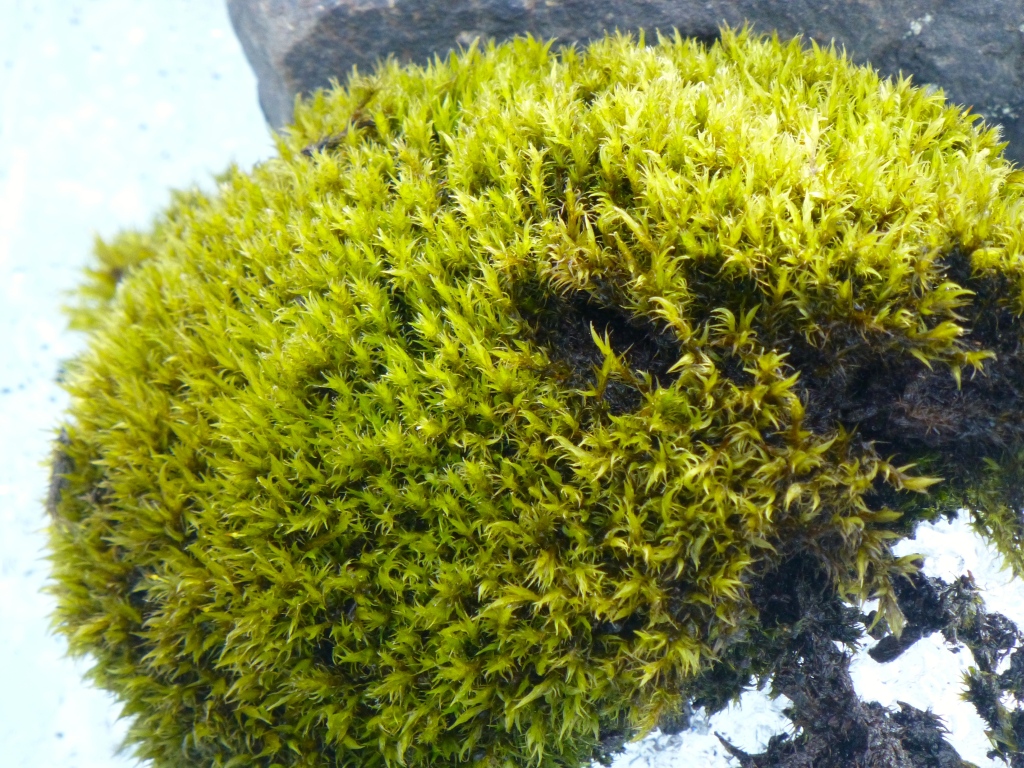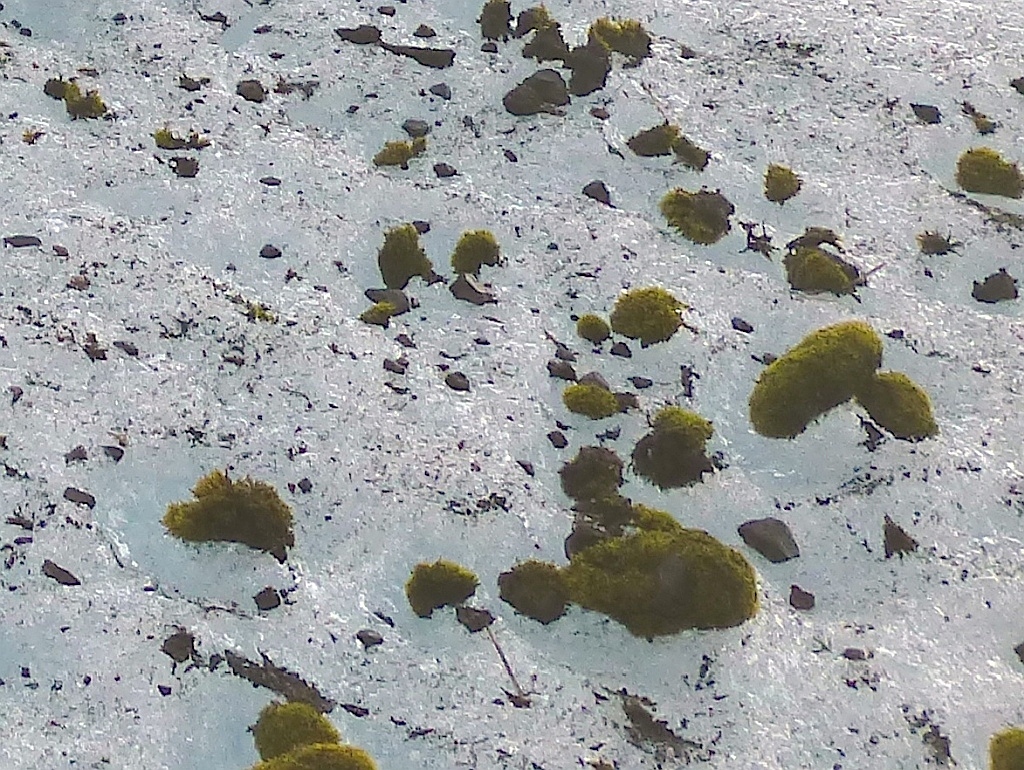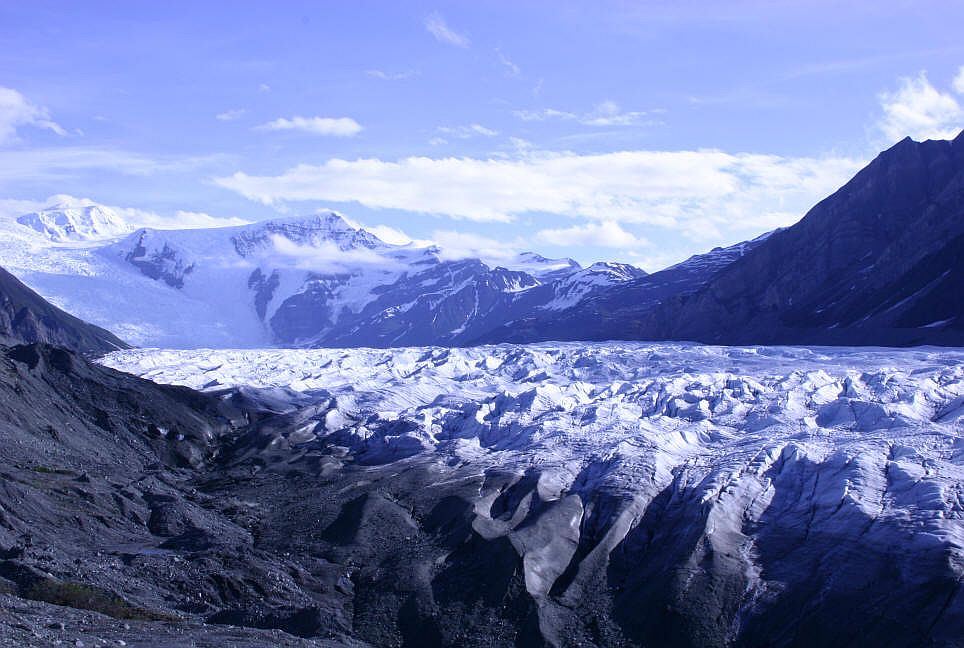
At certain glaciers in Iceland, Alaska, Svalbard and South America green balls of moss roam very slowly across the ice. Oblong in shape the balls form when moss clings to a bit of grit, gathers more moss, and eventually includes microscopic creatures. In the 1950s Icelandic meteorologist Jón Eyþórsson named them glacier mice (jökla-mýs).
Glacier mice are green all the way round because they move, eventually exposing every surface to the sun. How do they do it?

In 2009 Scott Hotaling, Tim Batholomaus and Sophie L Gilbert began a four-year study at the Root Glacier in Alaska to find out where glacier mice go and why.

After tagging grapefruit-sized moss balls with trackers they returned every year to find and measure the balls’ locations. In the process they learned that glacier mice move an inch a day and they move like a herd in the same direction!
Tim Bartholomaus tweeted when the study was published in April’s Polar Biology: Rolling stones gather moss: Movement and longevity of moss balls on an Alaskan glacier.
It’s friday at the end of the semester.
— Tim Bartholomaus (@TimBartholomaus) May 15, 2020
That means it’s time to ponder one of the great, enduring mysteries of cryospheric science and ecology: What controls the herd-like, coordinated, motion of glacier moss balls?
Just published: https://t.co/tHPJbjIlLv pic.twitter.com/m5ZzD9GTa0
So now we know where glacier mice go and how fast they get there but we still don’t know how or why they do it. The team measured the prevailing wind and the slope of the ice but the mice didn’t blow in the wind nor reliably roll downhill. They just moved — somehow — in a very slow herd.
Listen to their story or read about them in NPR’s article: Herd of Fuzzy Green ‘Glacier Mice’ Baffles Scientists.
There’s more to learn about glacier mice.
(photos by Cari (cariberry) on Flickr, Creative Commons license and from Wikimedia Commons; click on the captions to see the originals)
Absolutely fascinating.
Incredible!
Who knew? Nature is fascinating.
Just wanted to let you know that somebody is using one of your pics:
https://twitter.com/herecomethewar1/status/1297647917411385344/photo/1
HK, Thank you for the heads up, however the photos are not my own as noted in their captions. Two of them are by “cariberry” on Flickr whose photos have a Creative Commons non-commercial-use license. The third is from Wikimedia Commons, also Creative Commons. The tweet writer may have to notify “cariberry” but doesn’t need to notify me.